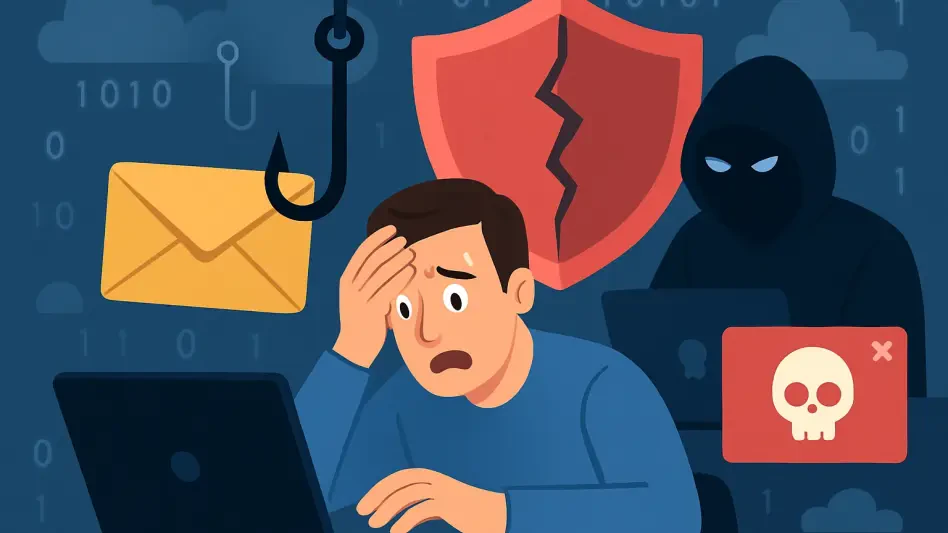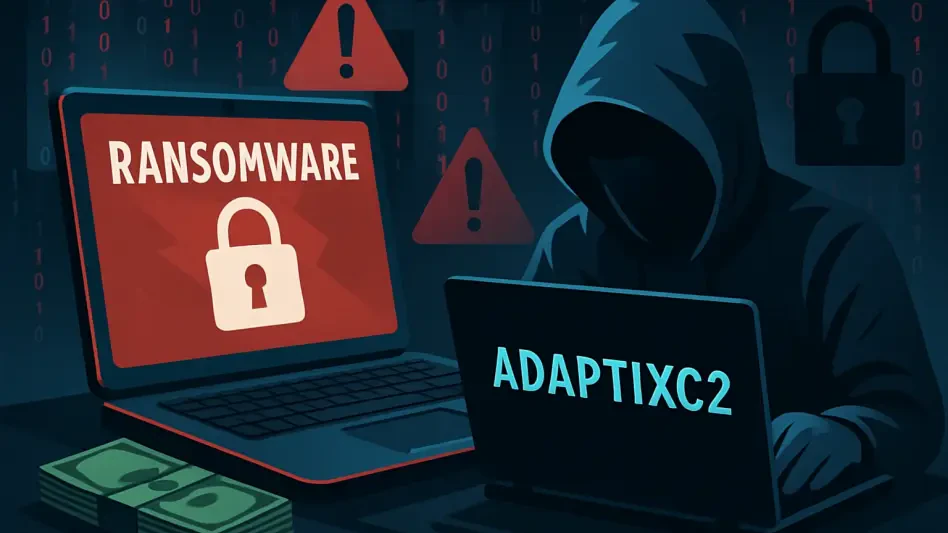In a fast-evolving cyber landscape, the emergence of ransomware groups like Interlock has underscored the critical importance of safeguarding digital assets against sophisticated threats. Interlock, a notorious ransomware group targeting critical infrastructure and businesses across North America and Europe, employs a double extortion model to pressure victims into compliance by threatening to leak exfiltrated data should ransom demands go unmet. Typically, these demands insist upon payment in Bitcoin, adding a layer of complexity for those aiming to counteract such attacks. The group’s approach includes unique tactics, like using “drive-by downloads” from compromised websites, often masquerading as genuine updates for applications like Google Chrome, Microsoft Edge, or security tools like FortiClient. Additionally, the group’s social engineering strategies, such as the deceptive ClickFix method, have been especially effective in tricking users into executing malicious commands under the guise of CAPTCHAs, thereby highlighting a pressing challenge for cybersecurity measures today.
Recognizing and Understanding Threats
Central to understanding Interlock’s threat is its ability to infiltrate networks and establish control using advanced tools like Cobalt Strike. After gaining access, they gather sensitive credentials, deploy keyloggers, and encrypt files, appending them with distinctive extensions like “.interlock.” The group compels victims to negotiate ransom payments through a .onion website accessed via the Tor browser, further complicating tracking efforts and enforcing anonymity. Recognizing these tactics is paramount for organizations striving to strengthen their cybersecurity frameworks. The sophistication of Interlock’s strategies suggests it continually evolves, adapting to overcome conventional security defenses. Awareness and education play pivotal roles in countering these threats. Organizations are encouraged to educate employees about phishing and social engineering tactics to build a vigilant workforce. By understanding how these attacks unfold, businesses can better anticipate potential breaches and implement preemptive defenses, making intrusion attempts less likely to succeed.
Implementing Robust Defensive Measures
Adopting a multi-layered security strategy that emphasizes proactive measures is a crucial step in combating ransomware threats like those posed by Interlock. The collective insights from agencies like the FBI, CISA, HHS, and MS-ISAC underscore several effective strategies. Implementing robust DNS filtering can help block access to malicious domains that ransomware groups use to distribute their payloads. Additionally, prompt patch management ensures that vulnerabilities exploited by attackers are swiftly addressed. Employee training focused on recognizing and responding to threats, particularly social engineering tactics, is vital for creating an informed and cautious workforce. Multi-factor authentication (MFA) offers an added layer of security, making unauthorized access significantly more difficult, especially when credentials are compromised. Network segmentation, too, plays a vital role by containing breaches when they occur, limiting the lateral movement of malicious actors within the network. Alongside these practices, maintaining regular offline data backups helps safeguard against data loss, ensuring that organizations can recover information without succumbing to ransom demands.
Coordinating a Unified Response
Proactive defense against ransomware is part of a broader initiative known as #StopRansomware, which illustrates a concerted effort to fortify defenses across organizations globally. Effective prevention requires a collaborative approach involving industry leaders and cybersecurity professionals. This initiative not only highlights the necessity of adopting comprehensive cybersecurity policies but also stresses the value of constant vigilance and intelligence sharing. By fostering a culture of collaboration, organizations can stay informed about the latest threats and vulnerabilities, benefiting from shared insights and experiences. Engaging in simulated ransomware attacks, known as red teaming, can help organizations better understand their system’s weaknesses and test their response strategies against real-world scenarios. These exercises are invaluable for refining emergency protocols and ensuring preparedness for potential breaches. Furthermore, embracing a culture of cybersecurity and integrating it into the organizational ethos is crucial for anticipatory defense. By prioritizing security, organizations can mitigate risks and build resilience against the continuous evolution of ransomware threats.
Looking Towards a More Secure Future
In today’s rapidly advancing cyber environment, the rise of ransomware groups like Interlock stresses the importance of protecting digital assets from sophisticated threats. Known for targeting essential infrastructure and businesses in North America and Europe, Interlock uses a double extortion method to force victims into complying with their demands. If these demands, usually requiring payment in Bitcoin, aren’t met, Interlock threatens to release stolen data, adding a layer of complexity for victims trying to counteract such attacks. The group’s tactics include “drive-by downloads” from compromised sites, posed as legitimate updates for programs such as Google Chrome, Microsoft Edge, or security tools like FortiClient. Furthermore, their social engineering techniques, such as the misleading ClickFix method, have been particularly successful in deceiving users into running harmful commands disguised as CAPTCHAs. This underscores the urgent challenge cybersecurity faces today in defending against these deceptive strategies.








